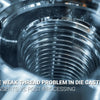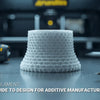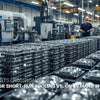How Can Industrial 3D Printing Machines Boost Your Manufacturing Efficiency?

How Can Industrial 3D Printing Machines Boost Your Manufacturing Efficiency?

In today's competitive manufacturing landscape, industrial 3D printing machines are becoming essential tools for businesses seeking to optimize their production processes. These advanced systems offer unprecedented capabilities in creating complex parts quickly and efficiently, while significantly reducing lead times compared to traditional manufacturing methods.
Recent market analysis shows that industrial 3D printing is experiencing explosive growth, with the global market projected to reach $36 billion by 2025. This surge in adoption reflects the technology's proven ability to transform manufacturing operations across various sectors.
As you explore ways to enhance your manufacturing capabilities, understanding the power of industrial 3D printing machines could be the key to gaining a competitive edge in your industry.
[Table of Contents]
- What Makes Industrial 3D Printers Different from Consumer Models?
- Which Industrial 3D Printing Technologies Drive Modern Manufacturing?
- How Do Key Features of Industrial 3D Printers Enhance Production?
- What Industries Are Leading the Industrial 3D Printing Adoption?
- How Much ROI Can You Expect from Industrial 3D Printing?
- What Challenges Should You Consider Before Investing in Industrial 3D Printing?
What Makes Industrial 3D Printers Different from Consumer Models?
The distinction between industrial and consumer 3D printers goes far beyond mere size differences. Industrial 3D printing machines represent a class of advanced manufacturing equipment designed specifically for professional applications.
These machines stand out through their robust construction, superior precision, and ability to operate continuously in demanding production environments. While consumer models might suffice for hobbyist projects, industrial 3D printers deliver the reliability and consistency required for professional manufacturing.
The key differentiators include industrial-grade components, advanced control systems, and comprehensive quality assurance features that ensure each printed part meets exact specifications. These machines also offer extensive material compatibility, allowing manufacturers to work with high-performance polymers, metals, and composites.
Which Industrial 3D Printing Technologies Drive Modern Manufacturing?
Today's manufacturing landscape features several cutting-edge 3D printing technologies, each serving specific industrial needs and applications. Understanding these technologies is crucial for making informed decisions about your manufacturing processes.
The most widely adopted industrial 3D printing technologies include FDM (Fused Deposition Modeling), SLS (Selective Laser Sintering), and SLA (Stereolithography). Each technology offers unique advantages for different manufacturing scenarios.
These technologies continue to evolve, with newer innovations focusing on speed, precision, and material capabilities. The choice of technology depends largely on your specific manufacturing requirements, production volume, and material preferences.
How Do Key Features of Industrial 3D Printers Enhance Production?
Industrial 3D printers come equipped with sophisticated features that directly impact manufacturing efficiency and output quality. These advanced capabilities set them apart in the production environment.
Key features include large build volumes exceeding several cubic meters, high-speed printing mechanisms, and multi-material printing capabilities. At Hotean's industrial 3D printing facility, these features enable rapid production of complex parts with exceptional accuracy.

Advanced features like automated calibration systems, real-time quality monitoring, and integrated post-processing capabilities ensure consistent results while minimizing human intervention. This level of automation and precision is crucial for maintaining high production standards in industrial settings.
What Industries Are Leading the Industrial 3D Printing Adoption?
The adoption of industrial 3D printing spans across various sectors, with some industries showing particularly impressive implementation rates and results.
Aerospace and automotive sectors lead the charge, utilizing industrial 3D printing for lightweight component manufacturing and rapid prototyping. Healthcare follows closely, with applications in custom medical devices and surgical tools.

The technology's versatility has also found applications in:
- Construction: Creating complex architectural elements
- Consumer goods: Producing customized products
- Defense: Manufacturing specialized equipment
- Energy: Developing innovative components for renewable energy systems
How Much ROI Can You Expect from Industrial 3D Printing?
Understanding the return on investment (ROI) for industrial 3D printing requires examining both immediate and long-term financial benefits.
With the global market projected to reach $36 billion by 2025, early adopters are seeing significant returns through reduced material waste, faster production cycles, and decreased labor costs. Our clients at Hotean typically report 15-30% cost savings compared to traditional manufacturing methods.
The ROI factors include:
- Reduced material waste by up to 40%
- Shortened production cycles by 50-80%
- Decreased inventory costs through on-demand manufacturing
- Lower labor costs through automation
What Challenges Should You Consider Before Investing in Industrial 3D Printing?
While industrial 3D printing offers numerous advantages, it's important to understand potential challenges before making an investment.
Common challenges include initial equipment costs, training requirements for personnel, and material selection limitations. However, working with experienced partners like Hotean's 3D printing experts can help navigate these challenges effectively.

Successfully implementing industrial 3D printing requires careful consideration of:
- Equipment maintenance and upgrades
- Quality control processes
- Material handling and storage
- Software and workflow integration
Conclusion
Industrial 3D printing machines represent a significant advancement in manufacturing technology, offering unprecedented capabilities for businesses ready to embrace innovation. While challenges exist, the benefits of increased efficiency, reduced costs, and enhanced production capabilities make it a worthy investment for forward-thinking manufacturers.
[External Links Recommendation]
- Additive Manufacturing Industry Reports
- Industrial 3D Printer Manufacturer Specifications
- Material Science Research Papers
- Manufacturing Process Optimization Guides
- Industry Case Studies and Success Stories
-
Posted in
3D Printing, Industrial 3D Printing Machines





